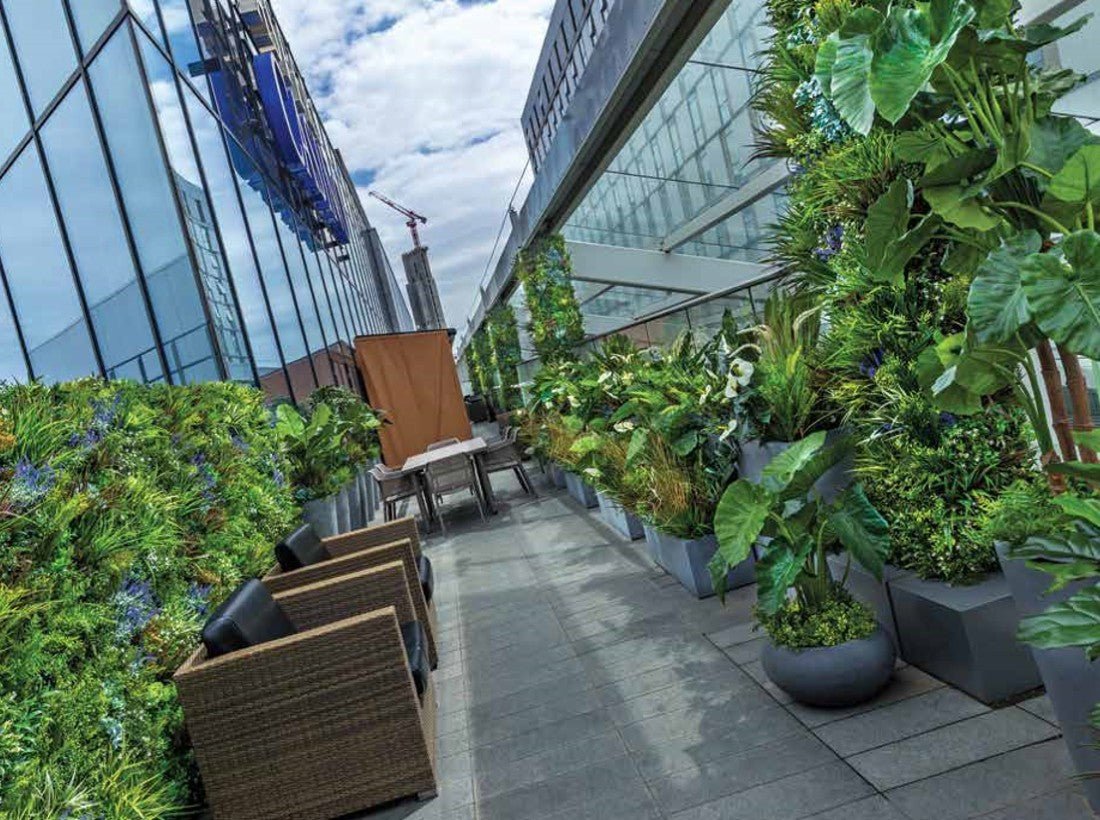Have you found artificial plants lacking their living counterparts' vibrant, natural beauty? Do you feel your home still lacks personality, even after buying all that faux greenery?
We get it - stiff foliage can be painfully obvious and diminish the atmosphere you strive to create. But it’s not a death sentence. In fact, it’s an opportunity.
After being in the business for a while, we’ve gleaned insider knowledge on transforming artificial greenery into veritable masterpieces. Today, you’ll learn how to rejuvenate your living space with the allure of nature’s finest creations (without all the maintenance that comes with it).
Are you ready to make fake plants look real and craft your fauxliege into a testament to the wonders of nature? Let’s jump in!
How to Make Artificial Plants Look Real?
From subtle details that replicate nature’s imperfections to strategic placements that create an illusion of growth, we’ve got 7 tips to kickstart your journey toward botanical perfection.
Here’s how you can make artificial plants look more natural:
Buy High-Quality Fake Plants

If you’re still on the fence about buying artificial greenery because you fear it’ll look plastic and uninspiring, there’s an easy fix!
Spending a little extra to buy high-quality artificial foliage (like these from our extensive collection) is essential for achieving a realistic look that will stand the test of time. So, before you splurge, pay attention to the tiniest details, as this is what makes the greatest difference. Look for fauxliege crafted with care and leaves that resemble the natural texture and color.
Aside from this, ensure your fake greenery has imperfections, just like real plants. Some discoloration, unevenness, and veining can elevate your greenery’s appearance. And while low-quality artificial plants may come with a lower price tag, is it really worth it if they look like a 3D render gone wrong?
Dust and Clean Faux Plants
Although you’ll never have to prune, trim, or water your artificial greenery, it still needs some upkeep. Regular maintenance is imperative for keeping your fauxliege looking fresh and vibrant.
If you skip this step, dust will accumulate on the leaves over time and make them appear dull and somber. So, wipe the leaves and dust them regularly to restore their natural sheen and look their best. If you’re new to the world of artificial plant care, learn how and how often to clean your fauxliege. All you need is a washcloth, window cleaner, and a feather duster.
By incorporating cleaning into your routine, you’ll have no qualms about your faux greenery and can enjoy its long-lasting beauty.
Mind the Location

Can you create a convincing and realistic display if you place your faux plants in a dark and dingy corner? Of course not.
Although fauxliege has the innate power to revitalize any space, give it a chance at realism by propping it in a favorable spot. And while fake greenery doesn’t have the same needs as its real-life counterpart, you should still mimic its natural environment. After all, you want your fake plants to look real, right?
When placing a new artificial topiary ball or faux vertical garden, mind the factors that help natural plants grow. For example, plants need natural light and most thrive in mild temperatures. So, create an environment that helps your artificial plant interact with its surroundings.
Add Soil or Moss to the Planter
One of the best ways to create fake plants that look real is by adding natural accenting, i.e. real elements. This simple step can make a significant difference in the appearance of your display. For example, if you’re working with a faux boxwood hedge, fill its planter with a layer of soil, dirt, moss, sand, dried branches, and leaves.
If you’re feeling adventurous, use decorative stones and pebbles to create a natural-looking base for your plants. By doing so, you’ll not only enhance the realism of your display but also add texture to the surroundings.
And when working with an artificial green wall, you can add faux white Bougainvillea flower stems to help your wall flourish.
Mix With Real Greenery

For a seamless blend between artificial and real greenery, incorporate live plants alongside your fake ones. If you’re still not sold on the idea of creating a green haven out of faux plants, mixing it up can be the perfect segue into working with artificial greenery. In a sense, you’ll be dipping your toes in the pool, not taking a deep dive straight away.
Choose real plants that complement your artificial ones in color, texture, and size. Refrain from buying one type of real plant and an artificial one that’s supposed to be its replica. Often, this brings out the latter's artificiality and makes the space look awkward. Instead, mix different types of plants together and create a display that emulates the lushness of a natural environment.
This allows you to enjoy the benefits of live plants while incorporating the durability of artificial greenery. The juxtaposition of real and artificial creates a captivating ambiance that will fool even the most discerning eye.
Fluff the Leaves

One telltale sign of artificiality is the flat or compressed appearance of the leaves. Whether it’s from rough transit or bad handling, leaves and stems can lose their shape and bend unnaturally.
To combat this, take time to fluff and shape the leaves of your faux plants. “Fluffing” doesn’t mean quickly brushing your fingers through the leaves as you would when adding volume to your hair. Instead, it's a gentle act of manipulating, unfurling, and bending the leaves to create dimension and mimic natural movement.
Imagine the way a gentle breeze would rustle through natural foliage and ruffle its leaves, and aim to replicate that effect. That way, you'll give your fauxliege a fuller look, and add volume.
Play With Lighting

Sometimes, the realism of your artificial plants might not be due to their appearance, but the lighting and environment. The right balance of sun and shade can make a world of difference for your space. Experimenting with different lighting techniques creates natural-looking shadows and highlights that magnify the illusion of live foliage.
Diffused lighting casts a gentle light that minimizes artificial glare, while direct sunlight highlights flaws. That doesn’t mean you can’t place your fake greenery in the sun, but you should protect the fauxliege with UV spray to be on the safe side.
By placing lamps with warm bulbs around your fauxliege, you'll highlight the textures of your artificial greenery and help it thrive. The interplay of light and shadow adds depth and tricks the eye into believing the plants are growing. Don’t be afraid to experiment and find the perfect balance.


